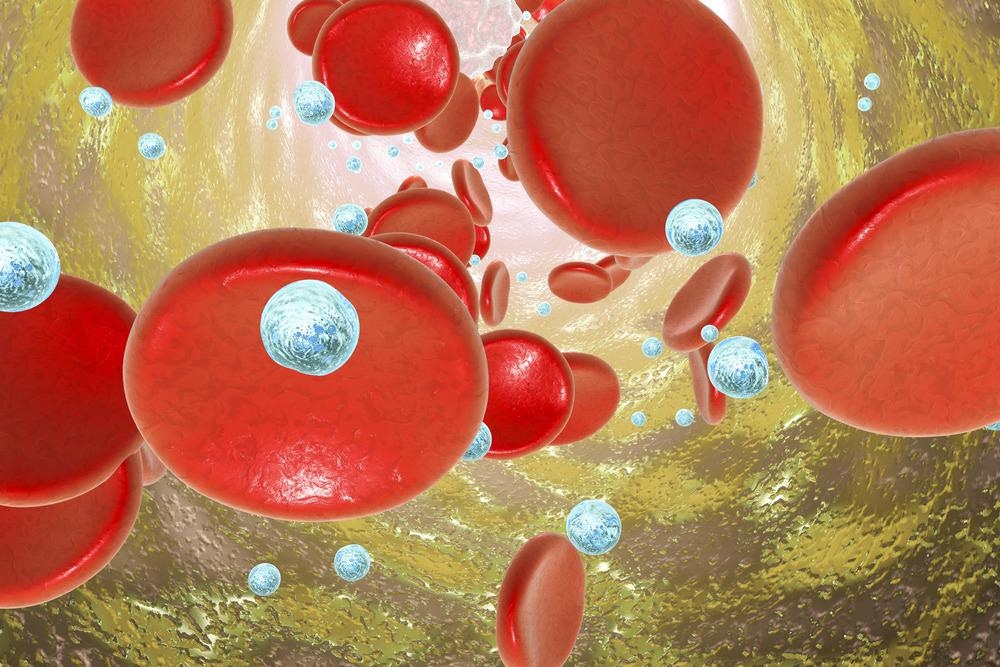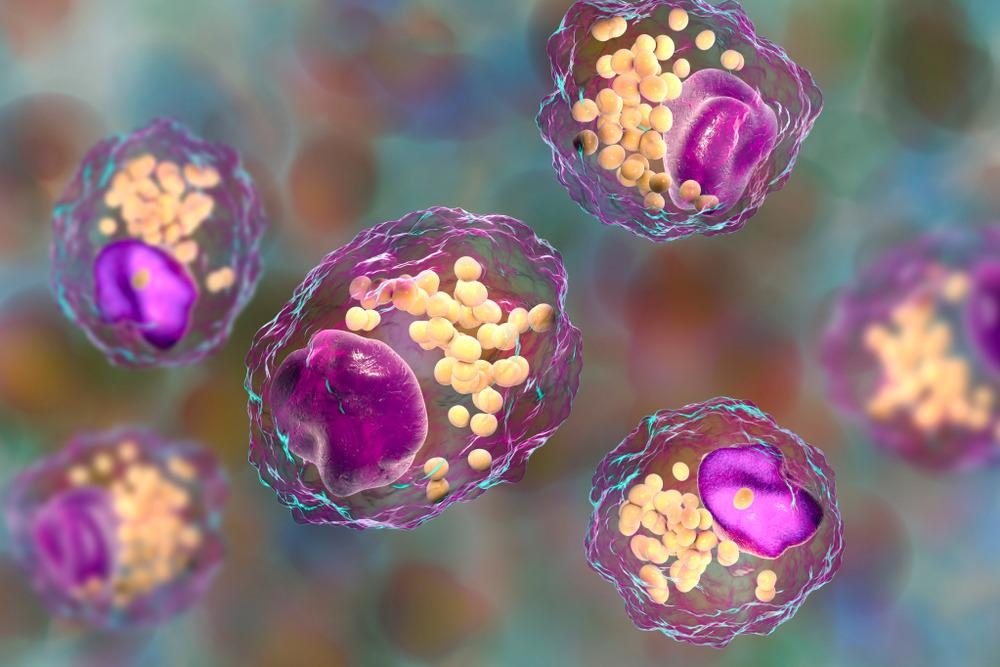Nanomaterials are innovating a myriad of industrial sectors, but the consequences of their exposure to our health are yet to be fully determined. AZoNano speaks with Dr. Gatti, a pioneer in the field of nanotoxicology about her involvement in new research that examines a possible link between nanoparticle exposure and sudden infant death syndrome (SIDS).
Please could you introduce yourself and how you became involved in this research topic?
My name is Antonietta Morena Gatti. I am a physicist, a Fellow of the Societies of Biomaterials and Engineering, and am the founder of the new scientific discipline called Nanopathology.
Thanks to a couple of European Research Projects I coordinated, I was able to continue working on a discovery of mine.
When applied to medicine, the physical method I proposed operates on histological sections and aims to identify the presence of inorganic micro- and nanoparticles. That particulate matter, often, though not always, is made up of pollutants of random and involuntary origin, and can interact with the biological substrate. This interaction triggers distinct pathological reactions.
Could you summarize the finding of your recent paper?
I had the opportunity to work on the brain tissues obtained from the autopsies of SIDS children, applying my electron microscopy technique coupled to Energy Dispersive Spectroscopy. A purely physical methodology was applied through those observations, allowing me to ascertain the presence of inorganic micro- and nanoparticles in those findings.
It is all too obvious that those completely foreign bodies should not be where I detected them. This particulate matter may have reached the brain from forms of environmental pollution. Contamination may have occurred due to polluted breast milk or milk of industrial origin or could be due to the administration of inadequately controlled drugs.
There is nothing to prevent there being a combination of the three causes. What cannot be doubted is that their presence is entirely undue and pathogenic, as demonstrated.
We know that this type of pollution can reach any tissue, but the consequences are severe and manifest quickly if the brain is affected.

© Kateryna Kon/Shutterstock.com
Despite increasing research evidence of the risk of nanoparticle exposure, nanotoxicology analysis is yet to be routine practice in healthcare systems. Why is this?
If it is true that nanotechnologies are an application of great interest of what science produced, especially economic interest, it is equally valid that nanotoxicology is its unpleasant downside.
Nanotechnology applications shouldn't have unpleasant side effects. Although it is possible to keep certain aspects of an existing problem hidden from general perception, it is impossible to keep them hidden forever. Inevitably, the general public will realize how the particles used in the nanotechnology field can induce pathologies that can be very serious.
The moment in which we find ourselves is that the attempts to conceal these facts are larger than the investment into researching them.
The study of nanotoxicology is essential for a "defensive" strategy towards these particles, but unfortunately, it is a study that is largely neglected.
Determining the cause of SIDS remains challenging, but the development of standardized autopsies can significantly contribute to pathological evaluations. How can this novel approach further enhance these evaluations?
Determining the cause of SIDS remains challenging, but the development of standardized autopsies can significantly contribute to pathological evaluations. How can this novel approach further enhance these evaluations, and what would the following steps be to do this?
Currently, it is essential to understand that the particles we are increasingly producing have an inevitable impact on the organism, and SIDS is only one of these consequences.
Biopsies are a core component of establishing the causes of death, but traditional techniques are insufficient in the face of particular matter action – something becoming more present in daily life.
Inorganic microparticles are foreign bodies that exert inflammatory properties and particles smaller than 100 nanometers, which are almost ubiquitous in the environment, can enter cells interacting with organelles. They can even penetrate the nucleus by modifying the cell's DNA.
This knowledge should not remain confined to advanced research laboratories and should be applied when carrying out a "modern" autopsy. At this stage, it is necessary to have the appropriate knowledge and technical means, such as the scanning electron microscope. Interdisciplinary, nanopathological and nanotoxicological skills are also critical.

© Billion Photos/Shutterstock.com
Typically, investigating the risk of nanoparticle exposure focuses on workplace environments. As nanomaterial usage increases, do you predict increased interest in nanotoxicology from research and industry?
As I mentioned, we are experiencing a period of naivety; I'm afraid we'll have to wait a little longer before the countermeasures in the workplace are applied for what triggers nanopathologies.
Public awareness around the risk of nano and microplastics is rising, yet information around toxic nanoparticles tends to remain in the academic sphere. How can researchers work with health practitioners to increase awareness around this topic?
I am just a scientist, and of course, I have no say in decisions made at levels other than my own. All the scientists involved in this field can do is publish their data; however, this is not easy.
The costs of research and lack of funding limit the development of this field. A disparity in research coverage of this topic by medical journals is also a problem.
I have published some articles and books concerning nanopathologies, which describe the mechanism of particle action. Furthermore, they describe the technique I use and how we can trace the particle's origin utilizing its elemental chemistry, shape, and size.
This knowledge is fundamental in treating patients that suffer from foreign body contamination and preventing exposure at the source. It is not uncommon that by eliminating the continuity in pollution, the subject improves or even returns to a state of health.
Various inorganic particles were identified in tissue samples, though the presence of enriched silicon structures was particularly unexpected. Could you discuss the implications of this finding?
Various inorganic particles were identified in tissue samples, though the presence of enriched silicon structures was particularly unexpected.
Despite our long experience with this research topic, this came as a surprise. The presence of silicon, a sort of mineral "cell", was puzzling. For histopathologists who stain the tissue, this does not exist; however, a similar phenomenon is observed in petrified forests. It could be that introducing nanoparticles into cells could induce the formation of a state between life and non-life.
It must be remembered, however, that at the nanometer scale, the laws of biology are not what we are used to. Scientists must take an open-minded approach with the sole aim of furthering our knowledge on the topic.

© Kateryna Kon/Shutterstock.com
What are the predicted biological effects following exposure?
We predict that shortly following entry, the particles are captured by macrophages and transported elsewhere, likely the lymph nodes. While the macrophage degrades, the particle remains intact.
In other circumstances, the particle can undergo oxidation, corroding itself. The resultant may be at least as toxic as the original particle; this happens with certain metallic nanoparticles, but not with those of ceramic nature, impacting their behavior as disease inducers.
The same is true for any electrical, magnetic and radioactive properties, a further aspect that should be investigated by those who practice biopsy today.
What aspect of this investigation did you find the most intriguing?
Beyond its importance in the health field, the fascination of this research is the lucky possibility of entering a world largely unexplored. A world where the laws we know that are proper to macro-objects and those that we know that are proper at the atomic and sub-atomic level seem to no longer apply.
In short, we are faced with a different logic and a language almost entirely to be deciphered.
Where can our readers go to stay up to date with this research topic?
I recommend readers to pay close attention to what is being published and to consider our books. Some are written with a broader audience in mind and are suitable for those from many backgrounds.
About Dr. Antonietta M. Gatti
 Dr. Gatti has a degree in Physics and a Ph.D. in Bioengineering. In 2012 she was honored with an International Fellowship by the world Societies of Biomaterials and Engineering. She is a past Professor of Biomaterials at the Faculty of Biosciences and Biotechnologies at the University of Modena and Reggio Emilia (Italy) and director of the Laboratory of Biomaterials.
Dr. Gatti has a degree in Physics and a Ph.D. in Bioengineering. In 2012 she was honored with an International Fellowship by the world Societies of Biomaterials and Engineering. She is a past Professor of Biomaterials at the Faculty of Biosciences and Biotechnologies at the University of Modena and Reggio Emilia (Italy) and director of the Laboratory of Biomaterials.
Dr. Gatti was appointed Member of the Italian Scientific Committee for Prevention and Control of Diseases in soldiers (CPCM) of the Italian Ministry of Defence and was Consultant of all the Governmental Commissions on Depleted Uranium and related diseases. For that, she had two audiences at the House of Lords in London.
She was a Coordinator of the nano-eco-toxicological Project of the Ministry of Defence of Italy called “VENAM", a reviewer of the European Science Foundation Research Conference and European consultant for the nanotechnology research projects in Austria, Switzerland, Finland.
Dr. Gatti acted as a Smart filter for NASA and was Coordinator of 2 European Projects (Nanopathology and DIPNA (nanotoxicology)) and of the National one called INESE (nanoecotyoxicology).
She has authored 280 articles and three books on Nanopathology and the health impact of nanoparticles and founded the laboratory NewNanodiagnostics (Italy) where she continues her consultant work for nanopathologies.
Disclaimer: The views expressed here are those of the interviewee and do not necessarily represent the views of AZoM.com Limited (T/A) AZoNetwork, the owner and operator of this website. This disclaimer forms part of the Terms and Conditions of use of this website.